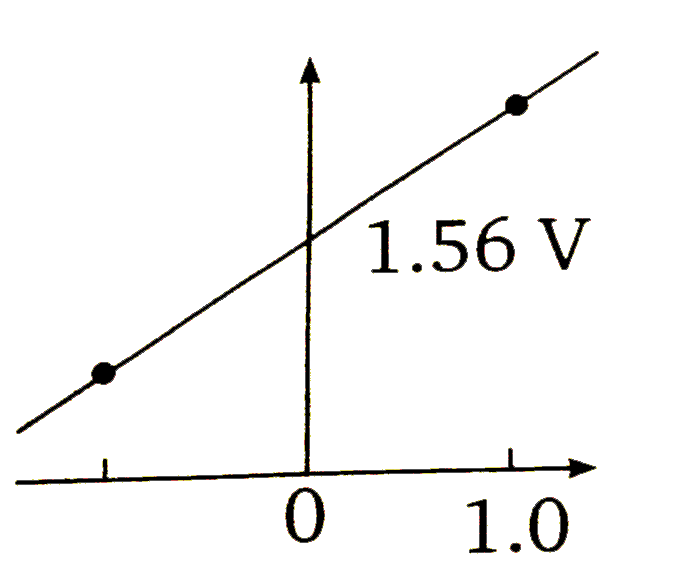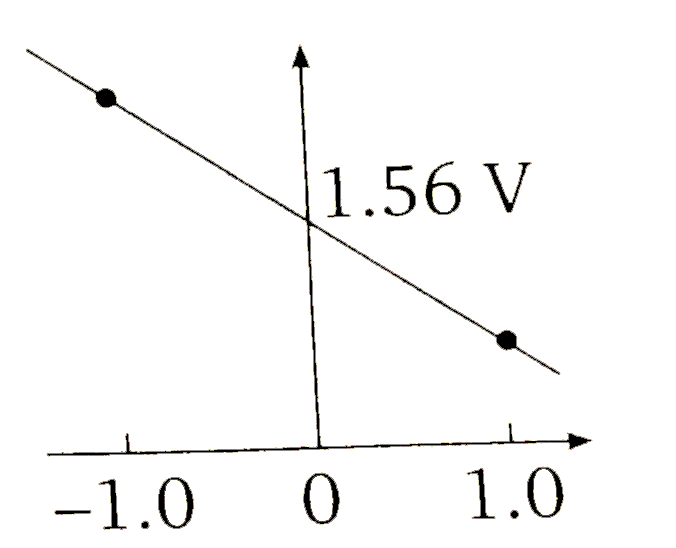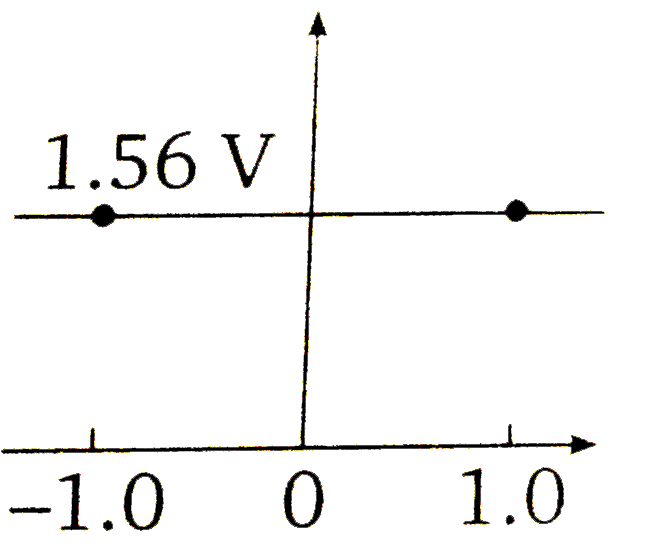Zn(s)+Cl2(1atm)→Zn2++2Cl−. Eocell of the cell is 2.12 V. To increase E
[Zn2+] should be increased
[Zn2+] should be decreased
[Cl−] should be decreased
PCl2 should be decreased
The correct Answer is:B, C
To solve the problem of how to increase the standard cell potential E∘cell for the reaction:
Zn(s)+Cl2(g)→Zn2++2Cl−
with a given E∘cell of 2.12 V, we can follow these steps:
Step 1: Understand the Nernst Equation
The Nernst equation relates the standard cell potential to the concentrations of the reactants and products:
Ecell=E∘cell−RTnFlnQ
where:
- Ecell is the cell potential under non-standard conditions.
- E∘cell is the standard cell potential (2.12 V in this case).
- R is the universal gas constant (8.314 J/(mol·K)).
- T is the temperature in Kelvin.
- n is the number of moles of electrons transferred in the reaction.
- F is Faraday's constant (96485 C/mol).
- Q is the reaction quotient.
Step 2: Determine the Reaction Quotient Q
For the given reaction, the reaction quotient Q is defined as:
Q=(Zn2+)PCl2
where:
- (Zn2+) is the concentration of zinc ions.
- PCl2 is the partial pressure of chlorine gas.
Step 3: Analyze How to Increase Ecell
To increase Ecell, we need to decrease the value of Q. This can be achieved by:
1. Increasing the concentration of the reactants (in this case, decreasing (Zn2+)).
2. Decreasing the concentration of the products (in this case, decreasing PCl2).
Step 4: Conclusion
To increase Ecell, we can:
- Decrease the concentration of Zn2+.
- Decrease the partial pressure of Cl2.
Thus, the most effective way to increase Ecell is to decrease the concentration of Zn2+ or decrease the partial pressure of Cl2.
The Nernst equation relates the standard cell potential to the concentrations of the reactants and products:
- Ecell is the cell potential under non-standard conditions.
- E∘cell is the standard cell potential (2.12 V in this case).
- R is the universal gas constant (8.314 J/(mol·K)).
- T is the temperature in Kelvin.
- n is the number of moles of electrons transferred in the reaction.
- F is Faraday's constant (96485 C/mol).
- Q is the reaction quotient.
For the given reaction, the reaction quotient Q is defined as:
- (Zn2+) is the concentration of zinc ions.
- PCl2 is the partial pressure of chlorine gas.
To increase Ecell, we need to decrease the value of Q. This can be achieved by:
2. Decreasing the concentration of the products (in this case, decreasing PCl2).
To increase Ecell, we can:
- Decrease the concentration of Zn2+.
- Decrease the partial pressure of Cl2.
Similar Questions
Knowledge Check
- Question 1 - Select One
Zn(s)+Cl2(1atm)→Zn2++2Cl−,E∘Cellofthecellis2.12v.To∈creaseE
A[Zn2+] should be increasedB[Zn2+] should be decreasedC[Cl−] should be increasedDPCl2 should be decreased - Question 2 - Select One
The reaction Cu2+(aq)+2Clc−(aq)→Cu(s)+Cl2(g) has Ec−.cell=−1.03V. This reaction
ACan be made to produce electricity in voltaic cellBCan be made to occur in an electrolytic cellCCan occur in acidic medium onlyDCan occur in basic medium only - Question 3 - Select One
Which graph correctly correlates Ecell as a function of concentration for the cell
Zn(s)+2Ag+(aq)→Zn2+(aq)+2Ag(s),E∘cell=1.56V
y-axis: Ecell, X-axis: log10[Zn2+][Ag+]2A B
B C
C D
D
Given that (at T = 298 K)
Cu(s)∣∣Cu2+(1.0M)∣∣∣∣Ag+(1.0M)∣∣Ag(s)E∘cell=0.46V
Zn(s)∣∣Zn2+(1.0M)∣∣∣∣Cu2+(1.0M)∣∣Cu(s)E∘cell=1.10V
Then Ecell for,
Zn∣∣Zn2+(0.1M)∣∣∣∣Ag+(1.0M)∣∣Ag at 298 K will be:View SolutionFor the cell given, below
Zn∣∣Zn2∣∣∣∣Cu2+∣∣Cu,(Ecell−E∘cell) is -0.12 V. it will be whenView SolutionConsider the following reaction,
Zn(s)+Cu2+(0.1M)→Zn2+(1M)+Cu(s) above reaction, taking place in a cell, E∘cell is 1.10V.Ecell for the cell will be (2.303RTF=0.0591)View SolutionThe overall reaction electrochemical cell at 298K.
Ag(s)|AgI(s)|I−(aq)∣∣∣∣Cl−(aq)∣∣Hg2Cl2∣∣Hg(l)∣Pt(s)
[Given: E∘Cl−|Hg2Cl2|Hg=0.26V.E∘Ag+∣Ag=0.8V.
Ksp(Agl)=10−16 and 2.303RTF=0.06]
E∘cell of the above cell is:View SolutionThe reaction Cu2+(aq)+2Clc−(aq)→Cu(s)+Cl2(g) has Ec−.cell=−1.03V. This reaction
View Solution


